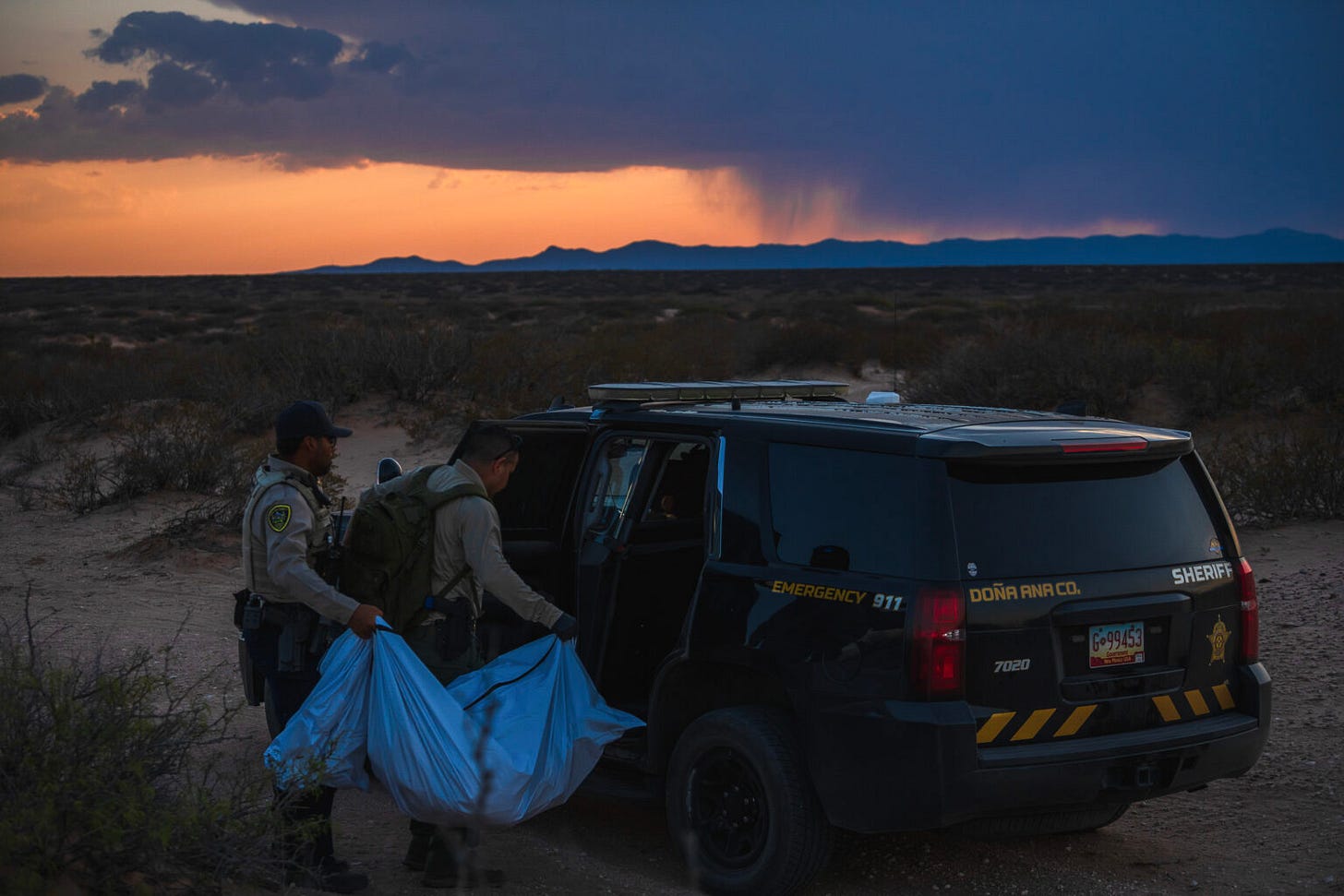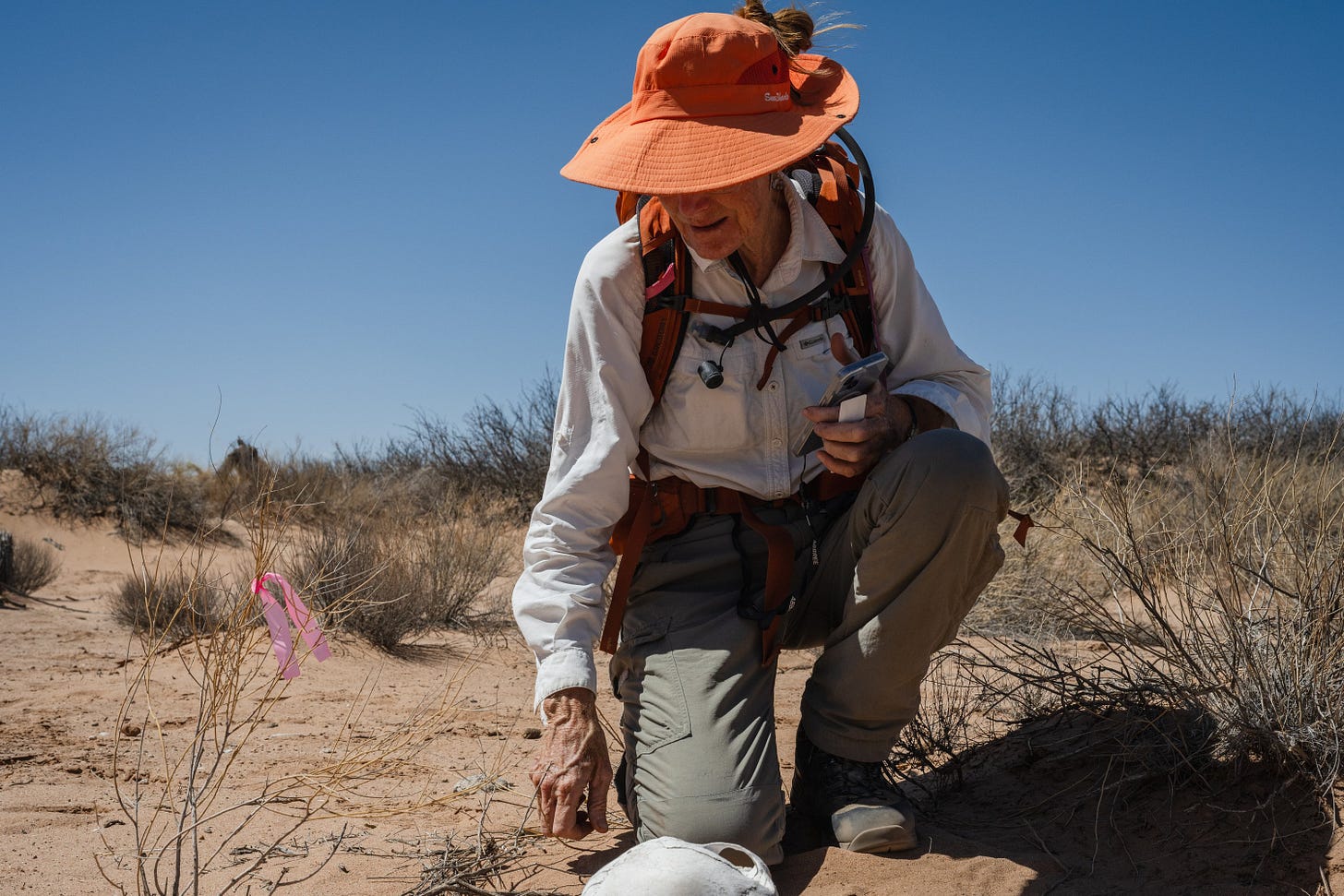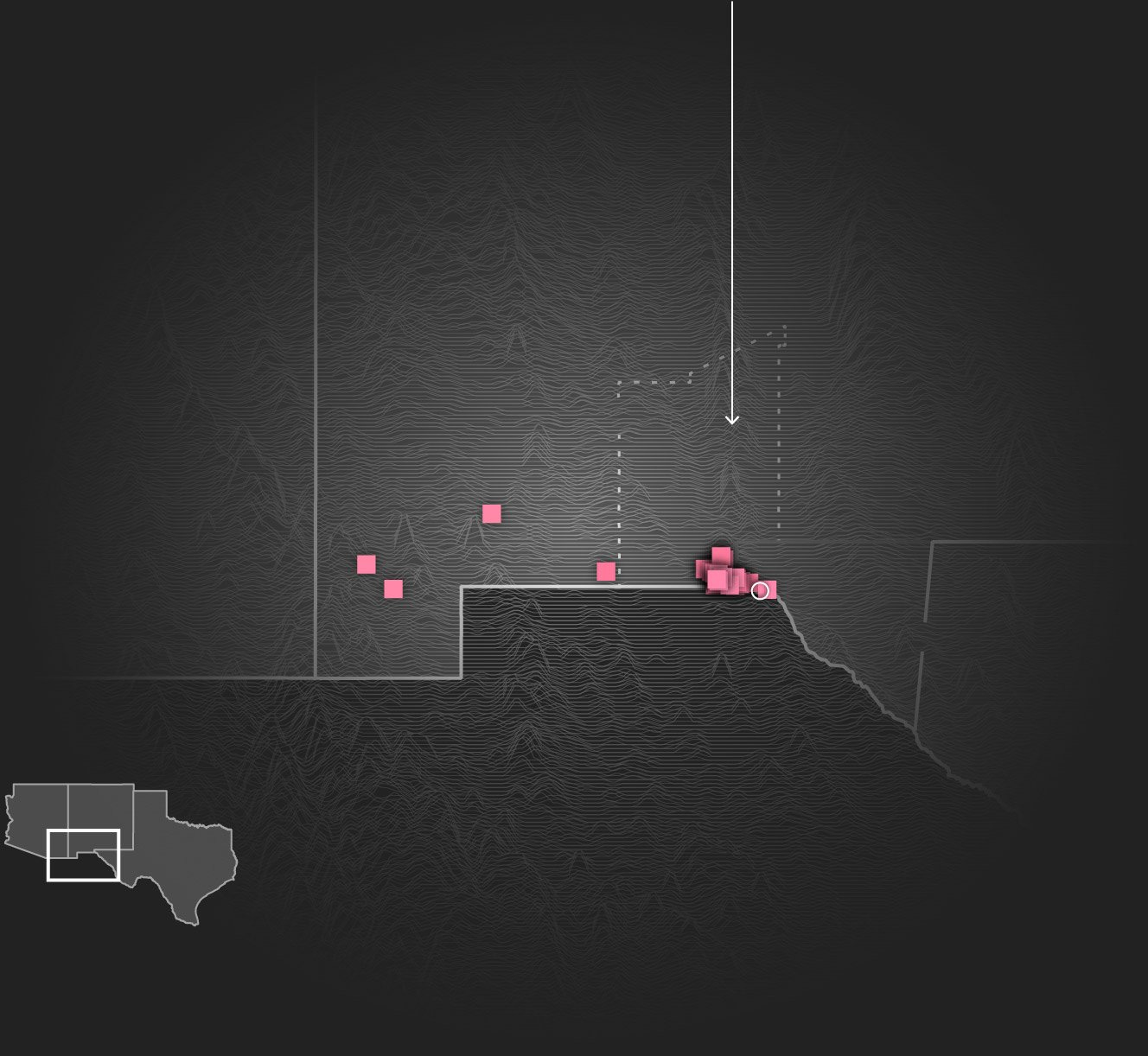Deaths in the New Mexico Desert Surge after Texas’ Border Crackdown Reaches El Paso
Since El Paso joined Operation Lone Star in 2022, migrant remains discovered in the desert west of the city have increased every year, even as they have declined in every other border sector.

This article is co-published and co-reported with The Texas Tribune, an independent nonprofit newsroom.
Editor’s note: This story includes images of skeletal human remains found by volunteers in the desert.
SANTA TERESA, New Mexico — On a hot morning in September, after hours of trekking through the Chihuahuan desert, Abbey Carpenter and her partner James Holeman spotted a pile of scattered bones.
Near a yucca plant, a human jawbone lay partially buried in the sand. Around it were vertebrae, femurs and ribs. Next to the bones, they saw a woman’s purple underwear with two tiny hearts on the corner and a Salvadoran passport.
The bones were among six sets of human remains they found that month.
Carpenter and Holeman founded a volunteer group in 2020 called Battalion Search and Rescue to search for migrant bodies in this patch of desert just west of El Paso. They took photos and recorded the coordinates on their cell phone. They tied a pink ribbon to a nearby branch.
Later, they mailed the passport to the Salvadoran consulate and reported the body to the Doña Ana County Sheriff’s Office in New Mexico — even though the sheriff sometimes doesn’t respond and has accused volunteers of planting bones in the desert.
Since September 2023, the group has found 27 sites with human remains in the desert, Holeman said.
“How did we get to this place as a country that we think so poorly of migrants?” Carpenter said during a recent search in the desert.
Historically, Border Patrol’s El Paso sector — which includes all 180 miles of New Mexico’s border with Mexico and 84 miles of El Paso and Hudspeth counties in West Texas — has had among the fewest migrant deaths across the southern border.
That changed in late December 2022, according to an investigation by The Texas Tribune and Source New Mexico, when the city of El Paso joined forces with Gov. Greg Abbott to participate in his signature border mission, called Operation Lone Star.
By 2024, the El Paso sector had become the deadliest place for migrants to cross along the entire U.S.-Mexico border.
From January 2023 to August 2024, 299 human remains were reported in the El Paso sector, the most of any sector along the southern border, according to the most recent data available from federal government data. That’s more than double the number of cases reported during the 20 months prior, when 122 remains were recorded before El Paso had adopted Operation Lone Star.
Since El Paso joined Texas’ border mission in 2022, migrant remains discovered in the El Paso sector have increased every year, even as they have declined in every other part of the border.
“We have people dying in New Mexico deserts because of Texas policies,” said New Mexico state Rep. Sarah Silva, a Democrat from nearby Las Cruces.

In June 2024, remains of 54 people were found in the El Paso sector of the border, the largest monthly count since 1998, according to tallies from U.S. Customs and Border Protection.
Most bodies were found in Doña Ana County, New Mexico, just west of El Paso.

Though many factors determine where and when someone crosses an international border — including federal immigration policies, organized crime and natural disasters — experts and advocates say any policy that pushes migrants into the desert will likely cost lives.
Keep reading with a 7-day free trial
Subscribe to ESG University to keep reading this post and get 7 days of free access to the full post archives.





